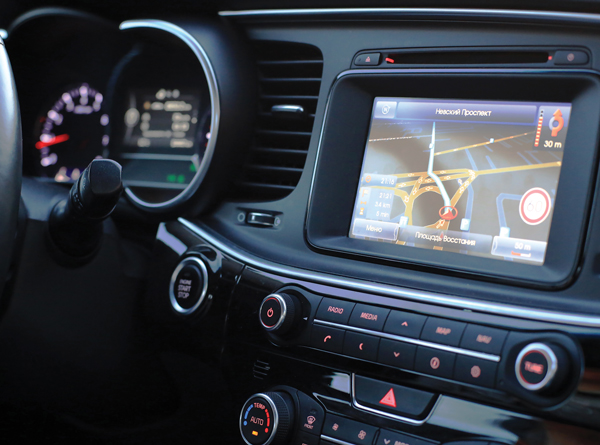BY JEFF SCHMIDT
 As we prepare for the final months of the year, it’s evident that 2017 will not bring much-needed relief from the rising insurance rates that fleet operators have experienced in recent years. Like many industries, the insurance marketplace goes through cycles of rising and falling rates, known as hard and soft market cycles. Hard markets are characterized by higher premiums, strict underwriting practices, less competition among insurance companies, and reduced insurance availability. Conversely, soft market cycles generally bring lower premiums, increased competition, relaxed underwriting guidelines, and capacity for insurance companies to write more policies.
As we prepare for the final months of the year, it’s evident that 2017 will not bring much-needed relief from the rising insurance rates that fleet operators have experienced in recent years. Like many industries, the insurance marketplace goes through cycles of rising and falling rates, known as hard and soft market cycles. Hard markets are characterized by higher premiums, strict underwriting practices, less competition among insurance companies, and reduced insurance availability. Conversely, soft market cycles generally bring lower premiums, increased competition, relaxed underwriting guidelines, and capacity for insurance companies to write more policies.
While the broader commercial insurance marketplace is in the midst of soft market conditions, the commercial auto product segment has settled into a hard market cycle. There are many factors that have caused this shift, including historically underpriced rates, increases in claims frequency and severity, and skyrocketing litigation expenses. It is both difficult to pinpoint the beginning of this environment of rising rates and becoming clear that it will not subside in the near future. Given this reality, business owners who hope to reduce these expenses must be proactive in their approach to safety and risk management.
How to Reduce Costs Through Tech
Although luxury ground transportation operators participate in the broader insurance marketplace, their policies are still reviewed and underwritten on an individual basis. There are many factors that determine the rate applied to a given policy, though the main driver of premiums is loss experience; operators with more claims and a higher total incurred loss amount pay more for their insurance, and vice versa. As such, reducing loss frequency and severity is one of the only reliable approaches to lowering insurance costs during a hard market cycle. The adoption of new technology products and services, when properly implemented and monitored, can help companies achieve that goal. This is why fleet owners should consider the use of camera systems, GPS programs, and electronic logging devices.
 Cameras
Cameras
Advancements in technology have made it easier and more affordable to install onboard camera systems. These systems often include two cameras—one facing inward and another facing outward—and can be continuous or event-based. Event-based camera systems are triggered by a hard brake, excessive speed, or some other G-force event. Onboard camera systems provide invaluable data that can influence a fleet operator’s risk management practices, thus reducing accident frequency and severity. With that in mind, an operator can use the insight provided by an onboard camera system to improve driver training and ongoing driver coaching. Reviewing video from a continuous recording system may reveal unsafe driving practices that can be identified and should be corrected before they lead to an accident.
On the other hand, event-based systems that typically record a predetermined length before, during, and after an accident can provide critical information that can explain the circumstances surrounding an incident and can potentially limit liability. An onboard camera system can take a he said/she said scenario and apply video evidence to support a case. If a commercial driver is involved in an incident, video footage may be the only thing separating a denied claim and a policy limit payout.
All of this requires active monitoring and management of camera data. Simply installing an onboard camera system will not improve fleet safety overnight. It is the application of data provided by these systems that is most valuable, and that will result in the greatest improvement in loss experience and ultimate reduction in insurance costs.
GPS
In addition to onboard cameras, utilizing GPS can also provide helpful insights to improve safety and reduce losses. Many operators have adopted this technology over the years because of its useful application, improving capabilities, and dropping costs. Modern GPS technology can be incorporated into a larger fleet management/telematics platform, which can assist in fleet management, identify risky driving habits, and mitigate potential loss exposures. GPS platforms can give fleet managers an “eye in the sky” view of their assets, enabling them to monitor vehicle location, speed, and trip detail. As speeding is one of the leading causes of traffic accidents in the U.S., GPS can alert a fleet manager when a driver has exceeded the speed limit by a given threshold, providing two crucial benefits: It can not only prevent a speed-related accident before it occurs but also help avoid a speeding ticket. Insurers are increasingly relying on driver motor vehicle records (MVR) when evaluating new and renewal policies. Employing chauffeurs with speeding infractions or other indicators of unsafe driving on their MVR can lead to increased rates, driver exclusions, or a carrier declining to either write or renew a policy.
 Examples
Examples
Implementing camera and GPS technology can provide tremendous benefits to a commercial fleet, and the proof lies in operators around the country that have adopted these products. For example, our company worked with a New York City-based fleet that had been averaging nearly $1M per year in incurred losses. Realizing they may soon be uninsurable, the business invested heavily in new technology by implementing a continuous recording onboard camera system and a GPS and telematics software platform. These products, coupled with a renewed focused on driver selection and training, resulted in a 95 percent reduction in incurred losses over the previous 18 months. At a time when policies are being renewed with minimum 5-10 percent increases, that operator recently renewed their commercial auto policy with a 20-percent rate decrease. It also helps that the cost of this technology has steadily decreased, making it more affordable and practical for operators of all sizes and in different markets.
Conclusion
In 2017, failing to have technology products and services in place is a risk few operators can afford to take. Commercial vehicles and the large insurance limits they are required to carry are easy targets for claimants and their attorneys, and these technologies can be the first line of defense against frivolous claims. Onboard cameras and GPS devices can provide real-time insights into driver behavior, and can be instrumental in providing crash-related data that can limit liability in the event of an accident. All of this leads to a reduction in loss frequency and severity, which can result in the ultimate goal: a reduction in insurance costs for your business. [CD0817]
Jeff Schmidt is the Senior Vice President of Research Underwriters. He can be reached at jeff@researchunderwriters.com.

